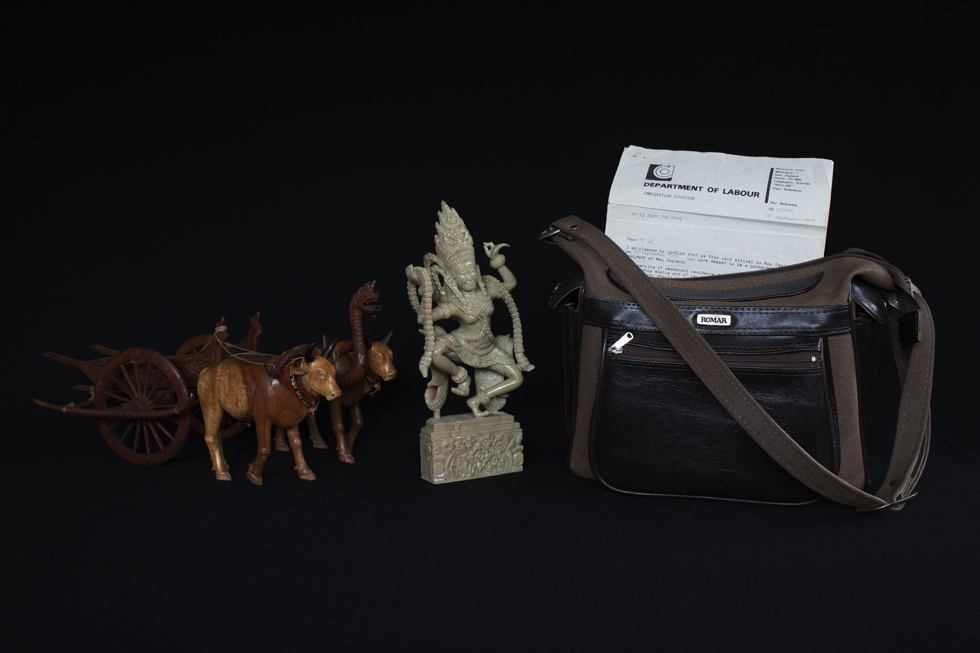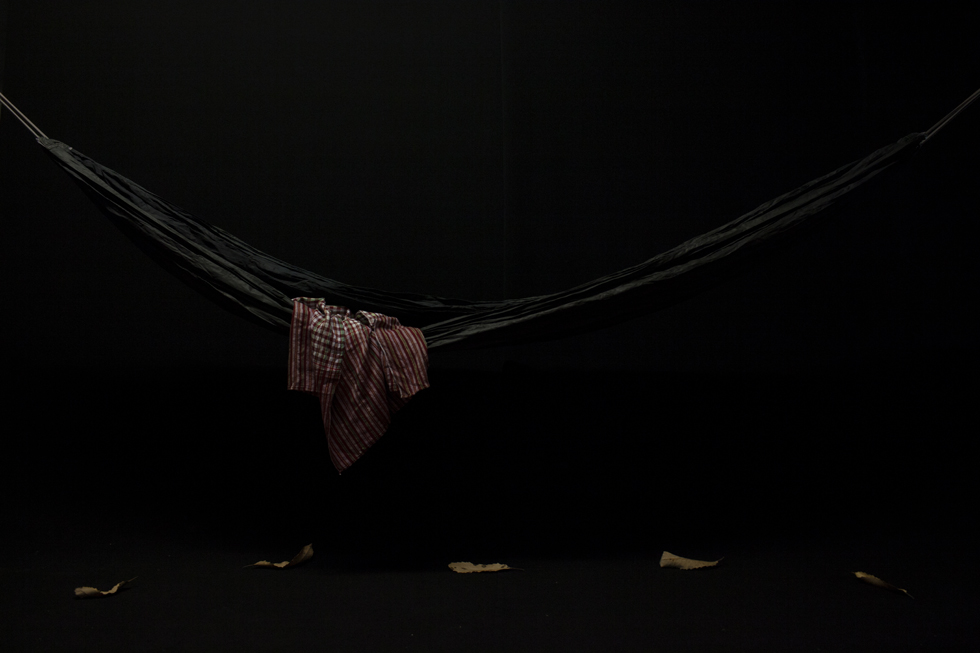
Alive III: a photography project by Kim Hak
May 2018 - September 2019
Aotearoa New Zealand, Cambodia
Artist Kim Hak worked with Auckland's Cambodian community on this project. Watch and basil (Chi Neang Vorng in Khmer). Photograph by Kim Hak.
Alive III: a photography project by Kim Hak
May 2018 - September 2019
Aotearoa New Zealand, Cambodia
"40 years after the Khmer Rouge war, the old people began to die. If all these living witnesses of the war pass away, with their experiences undocumented, those memories will be lost. Without learning from the past, we will repeat old mistakes. This is important not just for Cambodians but for all of humanity”
— Kim Hak

Surgical scissors in rice bag, belonging to Bun Rith Kuy. Photograph by Kim Hak.
Rei Foundation has partnered with Cambodian artist and photographer Kim Hak to produce a body of work that engaged with 12 Cambodian families now in Aotearoa, documenting personal objects that hold meaning as a part of their journey in surviving the Khmer Rouge and refugee camps and then resettling far from their homeland. By sharing the experiences of these former refugees through photographs and text, we aimed to generate new dialogues between individuals, whānau and communities to remember, (re)acknowledge and (re)analyse personal and national histories and identities.
This project contributes to Rei Foundation’s mission to empower individuals and communities to drive positive social change, by offering a platform for Kim Hak to further develop his practice, and to allow space for these important conversations to unfold.
This project contributes to Rei Foundation’s mission to empower individuals and communities to drive positive social change, by offering a platform for Kim Hak to further develop his practice, and to allow space for these important conversations to unfold.
Alive was shown at Objectspace in Auckland from 1 June to 21 July, and featured 25 works from the New Zealand community and five works from Kim Hak’s first chapter of the project. From 1 to 30 August 2019, the works were exhibited once again at Bophana Center in Phnom Penh, bringing the stories of the diaspora back to those who have remained in Cambodia.
A range of public programmes ran alongside the exhibition, including events tailored to the Cambodian communities of Auckland and Hamilton, and local artists and art students, along with an outdoor exhibition in Manukau, allowing the stories to reach beyond the gallery walls.
A range of public programmes ran alongside the exhibition, including events tailored to the Cambodian communities of Auckland and Hamilton, and local artists and art students, along with an outdoor exhibition in Manukau, allowing the stories to reach beyond the gallery walls.

A small knife and orange. Man Hau Liev first obtained this small knife when he was about 11 years old. Photograph by Kim Hak.
In Objectspace’s beautiful gallery space, Kim Hak’s photographs hung together on a black wall, while their corresponding objects, generously on loan from their owners, sat in purpose-built displays in the centre of the space. Each object was illuminated by its owner’s story, as told to Kim Hak, from the medical equipment salvaged in haste during an evacuation, to the knife (pictured above) that was used daily for peeling fruit, but also for protection.
Few personal memories about the Khmer Rouge genocide in Cambodia and the refugee diasporic experience have been shared either within Cambodian communities or in general in Aotearoa. In partnering with Kim Hak to engage with New Zealand Cambodians and draw out their own stories, Rei Foundation aimed to facilitate intergenerational, cultural and community dialogue, creating a safe space for those affected to share their experiences and thoughts with their family, friends and the wider public.
As hoped, the triumph of this exhibition has been the incredible engagement of the Cambodian participants and visitors to the space who have often been visibly moved by seeing Kim Hak’s photographs alongside the familiar objects exhibited in the space.
Few personal memories about the Khmer Rouge genocide in Cambodia and the refugee diasporic experience have been shared either within Cambodian communities or in general in Aotearoa. In partnering with Kim Hak to engage with New Zealand Cambodians and draw out their own stories, Rei Foundation aimed to facilitate intergenerational, cultural and community dialogue, creating a safe space for those affected to share their experiences and thoughts with their family, friends and the wider public.
As hoped, the triumph of this exhibition has been the incredible engagement of the Cambodian participants and visitors to the space who have often been visibly moved by seeing Kim Hak’s photographs alongside the familiar objects exhibited in the space.
The exhibition has provided a catalyst for younger New Zealand Cambodians to ask their family members about their experiences, and has introduced Objectspace, a public gallery with a focus on material culture, to new audiences. People from Rei Foundation and Objectspace have benefitted from working and becoming friends with members of the Cambodian community who were part of the project, and the conversations that have occurred as a result of Alive have also strengthened relationships within New Zealand’s Cambodian community.
Another positive outcome from the project has been the wide range of non-Cambodians newly engaged with Cambodian history, through experiencing the exhibition, listening to the panel discussion during the show’s opening week, and hearing the compelling lecture from Rei Foundation peace scholar Dody Wibowo on World Refugee Day. An industry-focussed talk from Bophana Center director Sopheap Chea, who has led the development of a Rei Foundation-backed Khmer Rouge history app, attracted a crowd of Auckland-based curators, librarians, archivists, visual arts educators and students. A publication documenting the project is being produced, featuring texts from local Cambodian scholars Niborom Young and Dr Man Hau Liev and an introduction from renowned Cambodian filmmaker Rithy Panh. This book will allow the stories to continue to be shared long after the exhibition has ended.
Another positive outcome from the project has been the wide range of non-Cambodians newly engaged with Cambodian history, through experiencing the exhibition, listening to the panel discussion during the show’s opening week, and hearing the compelling lecture from Rei Foundation peace scholar Dody Wibowo on World Refugee Day. An industry-focussed talk from Bophana Center director Sopheap Chea, who has led the development of a Rei Foundation-backed Khmer Rouge history app, attracted a crowd of Auckland-based curators, librarians, archivists, visual arts educators and students. A publication documenting the project is being produced, featuring texts from local Cambodian scholars Niborom Young and Dr Man Hau Liev and an introduction from renowned Cambodian filmmaker Rithy Panh. This book will allow the stories to continue to be shared long after the exhibition has ended.
Return to Projects
















